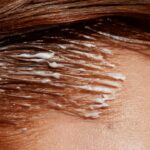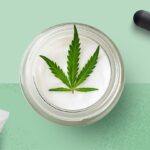An upper endoscopy is the only way to diagnose EoE. An endoscopy is a procedure in which a flexible tube with a light and camera on the end is passed through your mouth into your esophagus to see if your esophagus is inflamed.
In EoE, the esophagus may look red, swollen, or narrowed, with white, bumpy patches or an accordion-like appearance.
Visual inspection may not be enough to diagnose EoE, as up to 10 percent of people with EoE have an esophagus that appears normal.
In these cases, a biopsy can help to confirm the diagnosis. During an endoscopy, your doctor will remove small samples of tissue from your esophagus. A pathologist analyzes the tissue samples under a microscope to determine if EoE is present.
If a biopsy shows that there are 15 or more eosinophils in a specific section of the sample, this indicates probable EoE.
Doctors often repeat biopsies throughout the diagnostic process and over the course of the disease to track the condition of the esophagus and see if treatment is helping.
If your doctor suspects that you may have EoE based on your symptoms, they will recommend tests to detect inflammation and increased amounts of eosinophils, the type of white blood cells that give the disease its name. Additionally, they may recommend tests to rule out other conditions or determine EoE triggers.
Other tests that may be useful in providing more information about the cause of your EoE include:
Allergy Tests
Many people with EoE also have allergic rhinitis or food allergies. Allergic reactions to food are a main cause of EoE symptoms. Sometimes, doctors recommend allergy testing to get more information about what’s triggering your symptoms, but these tests aren’t always reliable.
Blood tests, skin prick tests, and food patch tests are typically used to diagnose allergies. However, these tests often fail to expose food sensitivities in EoE because reactions can be delayed or develop over days. Additionally, EoE flare-ups are generally caused by different immune system mechanisms than those that are found in traditional food allergies.
Sometimes environmental allergens, such as pollen, dust mites, or mold play a role in EoE. Allergy testing for these common culprits may be done as part of your evaluation.
Elimination Diet
Doctors may recommend an elimination diet to try to pinpoint which foods are causing your symptoms. This strategy involves eliminating certain foods or drinks from your diet for several weeks and then adding them back one at a time.
If your symptoms return when you reintroduce foods, your doctor may perform follow-up biopsies to see if eosinophils have returned. This can help uncover which foods are causing a reaction.
Once the problematic foods are removed, symptoms usually improve in a few weeks. However, foods that trigger EoE can change over time, which can further complicate the diagnostic process.
Tests to Rule Out Other Conditions
Other diseases can cause eosinophils to build up in the esophagus. Some of these include:
Sometimes, tests may be needed to rule out these conditions. GERD, for example usually presents with fewer eosinophils in the esophagus than EoE, but experts haven’t yet clarified exactly how many eosinophils define severe reflux (stomach acid entering the esophagus) versus EoE.
Read the full article here




